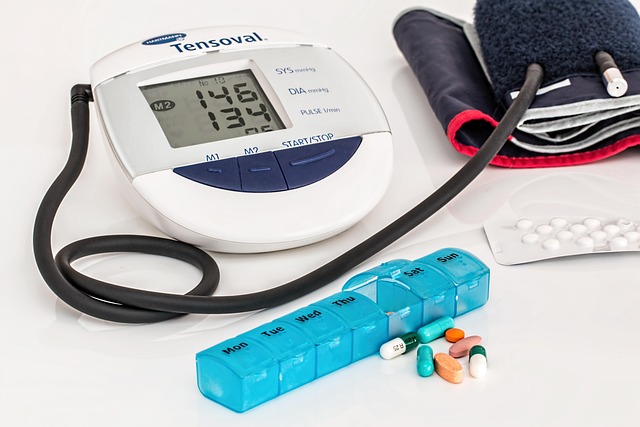In the modern era, technology has revolutionized nearly every aspect of our lives, including how we approach health and fitness. One area where technological advancements have made a profound impact is weight loss tracking. From wearable devices to mobile apps and online platforms, technology offers tools that empower individuals to monitor their progress, stay motivated, and achieve their goals more effectively. By providing data-driven insights, fostering accountability, and simplifying complex processes, technology plays an indispensable role in making weight loss journeys more efficient and sustainable.
1. Precision Through Data Collection
One of the most significant contributions of technology to weight loss is its ability to collect and analyze precise data. Unlike traditional methods like handwritten journals or guesswork, digital tools provide accurate, real-time information about various aspects of your health and habits.
Examples of Data-Driven Tools:
- Smart Scales: Modern scales go beyond measuring weight; they track body fat percentage, muscle mass, hydration levels, bone density, and more. This comprehensive data helps users understand changes in body composition rather than focusing solely on the number on the scale.
- Fitness Trackers: Devices like Fitbit, Apple Watch, and Garmin monitor metrics such as steps taken, calories burned, heart rate, sleep quality, and activity duration. These insights allow users to identify patterns and adjust their routines accordingly.
- Food Logging Apps: Apps like MyFitnessPal, Lose It!, and Cronometer enable users to log meals and track macronutrients (carbs, proteins, fats) and micronutrients (vitamins, minerals). Barcode scanners and extensive food databases streamline the process, ensuring accuracy.
Why Precision Matters:
Accurate data eliminates ambiguity, helping individuals make informed decisions about their diet and exercise regimens. For instance, knowing exactly how many calories you consume versus burn allows for better calorie deficit management—a cornerstone of weight loss.
2. Motivation Through Gamification and Accountability
Staying motivated during a weight loss journey can be challenging, especially when results take time to materialize. Technology leverages gamification and social connectivity to keep users engaged and accountable.
Gamification Features:
Many fitness apps incorporate game-like elements to encourage consistent effort:
- Challenges and Badges: Completing daily step goals or hitting weekly milestones earns virtual rewards, creating a sense of accomplishment.
- Progress Visualizations: Graphs, charts, and trend lines show incremental improvements over time, reinforcing positive behavior.
- Leaderboards: Competing with friends or community members adds a fun competitive edge, pushing users to push harder.
Social Accountability:
Sharing progress on platforms like Strava, Nike Run Club, or even social media fosters external motivation. Friends and family can cheer you on, while online communities offer support and advice. Publicly committing to goals increases accountability, making it harder to give up.
3. Personalization Through AI and Machine Learning
No two weight loss journeys are identical, and technology excels at tailoring solutions to individual needs. Artificial intelligence (AI) and machine learning algorithms analyze user data to provide personalized recommendations.
How Personalization Works:
- Custom Meal Plans: Apps like Noom and Lifesum use AI to design meal plans based on dietary preferences, allergies, and weight loss objectives.
- Adaptive Workout Programs: Platforms like Freeletics and Peloton adapt workouts to match fitness levels, recovery times, and performance trends.
- Behavioral Insights: Some apps track not only physical activity but also emotional triggers for overeating or skipping workouts, offering strategies to address these challenges.
This level of customization ensures that users follow plans that align with their unique circumstances, increasing adherence and success rates.
4. Accessibility and Convenience
Technology democratizes access to resources that were once limited to gyms, nutritionists, or personal trainers. Mobile apps and wearable devices bring expert guidance directly to users’ fingertips, anytime and anywhere.
Key Benefits of Accessibility:
- On-the-Go Support: Whether traveling or working long hours, users can rely on portable devices and apps to maintain consistency.
- Affordability: Many tech-based solutions cost significantly less than hiring professionals, making them accessible to a broader audience.
- Integration with Daily Life: Smartwatches and voice assistants seamlessly integrate into routines, eliminating barriers to adoption.
For example, someone with a busy schedule can still track their water intake, set reminders for workouts, and receive recipe suggestions—all without disrupting their day.
5. Real-Time Feedback and Adjustments
Traditional weight loss methods often involve delayed feedback, such as waiting weeks to see changes on the scale. Technology provides immediate feedback, enabling quick adjustments to optimize results.
Real-Time Monitoring Examples:
- Heart Rate Zones: Fitness trackers alert users when they enter fat-burning zones during cardio sessions, maximizing efficiency. – Caloric Balance Alerts: Apps notify users if they’ve exceeded daily calorie limits or missed nutrient targets, preventing setbacks. – Sleep Optimization: Wearables analyze sleep cycles and suggest bedtime routines to enhance recovery, which indirectly supports weight loss.
By addressing issues as they arise, real-time feedback minimizes frustration and keeps users on track.
6. Overcoming Common Challenges
Weight loss journeys are fraught with obstacles, from plateaus to cravings. Technology equips users with tools to overcome these hurdles.
Solutions for Plateaus:
- Activity Reminders: Sedentary alerts prompt users to move throughout the day, combating stagnation.
- Variety in Workouts: Apps suggest new exercises to prevent boredom and stimulate different muscle groups.
Managing Cravings:
- Mindful Eating Prompts: Some apps guide users through mindful eating exercises, reducing impulsive snacking.
- Substitution Suggestions: When logging unhealthy foods, apps recommend healthier alternatives.
Potential Drawbacks of Technology in Weight Loss
While technology offers numerous advantages, it’s important to acknowledge potential downsides:
- Over-Reliance on Metrics: Obsessing over numbers can lead to unhealthy behaviors or anxiety.
- Privacy Concerns: Sharing sensitive health data raises questions about security and misuse.
- Tech Fatigue: Constant notifications and data tracking may feel overwhelming for some users.
To mitigate these risks, it’s crucial to strike a balance between leveraging technology and maintaining a holistic approach to well-being.

Leave a Reply